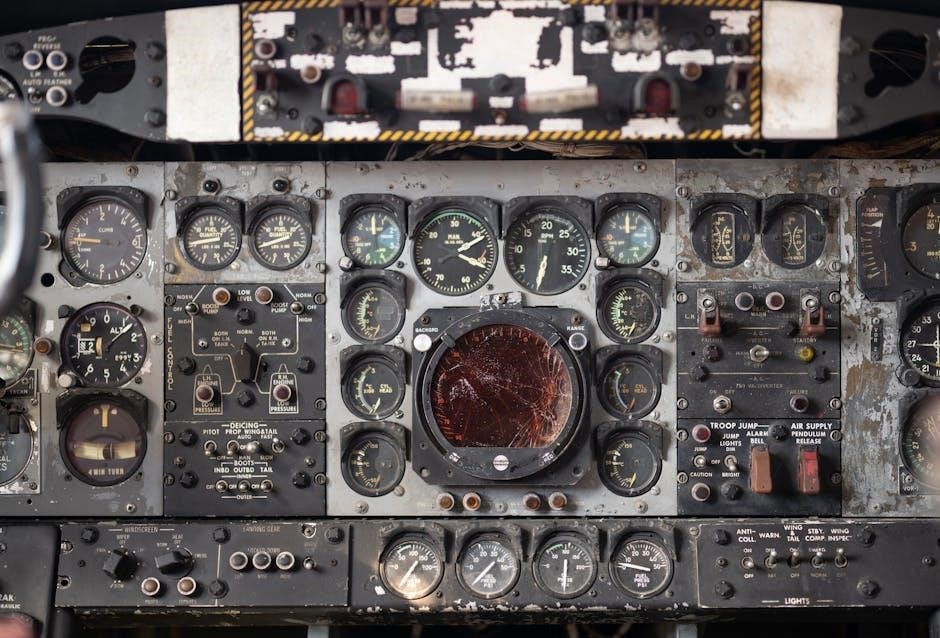Ryobi Pressure Washer Manual: A Comprehensive Guide
Ryobi pressure washers are engineered for user-friendly operation and maintenance. The user manual is crucial, providing step-by-step guides for assembly, operation, and upkeep. This ensures powerful cleaning and prolonged lifespan.
Ryobi pressure washers are renowned for their powerful performance, designed to tackle even the most demanding cleaning tasks. Equipped with high-quality motors and pumps, these washers deliver the necessary force to blast away dirt, grime, and debris from a variety of surfaces. Whether you’re cleaning decks, concrete paths, driveways, or brick walls, a Ryobi pressure washer offers the strength and efficiency needed to get the job done effectively.
Beyond their power, Ryobi pressure washers are created with the user in mind, emphasizing ease of operation and maintenance. The accompanying user manual serves as an invaluable guide, providing step-by-step instructions for assembly, proper usage, and routine maintenance. This ensures that users can safely and effectively utilize their pressure washer while also prolonging the lifespan of the machine. By following the guidelines outlined in the manual, users can maximize the performance and durability of their Ryobi pressure washer for years to come.
Finding the Correct Ryobi Pressure Washer Manual

Locating the correct Ryobi pressure washer manual is essential for safe and effective operation. The first step is to identify your pressure washer’s model number, typically found on a sticker or plate affixed to the unit. Common locations include the frame, engine housing, or near the handle.
Once you have the model number, visit the official Ryobi website or reliable online manual repositories. Many websites specialize in hosting user manuals for various products, including Ryobi pressure washers. Use the model number to search for the specific manual corresponding to your pressure washer. Several sources claim to host 40 Ryobi manuals, which suggests there is a high degree of availability. Verify that the manual matches your model to ensure accurate information on assembly, operation, maintenance, safety and troubleshooting. If a physical copy came with your unit, keep it in a safe place!
Key Sections in a Ryobi Pressure Washer Manual
A Ryobi pressure washer manual is structured to guide users through all aspects of the product. Key sections include safety instructions, assembly instructions, operating instructions, maintenance procedures, and a troubleshooting guide. The safety section highlights critical warnings and precautions to prevent injury and damage during operation.
Assembly instructions provide step-by-step guidance on putting the pressure washer together, while the operating instructions detail how to start, use, and shut down the machine properly. Maintenance procedures outline routine tasks to keep the pressure washer in good working order, such as cleaning and storage. The troubleshooting guide offers solutions to common problems, helping users resolve issues quickly. Each section is vital for ensuring safe, efficient, and long-lasting use of your Ryobi pressure washer. By consulting these sections, users can maximize the performance of their equipment and extend its lifespan.
Safety Instructions and Warnings

The safety instructions and warnings section of a Ryobi pressure washer manual is paramount for preventing accidents and injuries. This section emphasizes the importance of reading and understanding the entire manual before operating the pressure washer. It details potential hazards associated with high-pressure water jets, such as the risk of serious injury from improper use or aiming the spray at people or animals.
Specific safety rules cover precautions for positioning the pressure washer, avoiding flammable materials, and ensuring adequate ventilation when using gasoline-powered models. The manual also warns against using damaged accessories or making unauthorized modifications to the equipment. It highlights the need for protective gear, including eye protection, and stresses the importance of keeping children and bystanders away from the operating area. By adhering to these safety guidelines, users can minimize risks and ensure safe operation of their Ryobi pressure washer, preventing accidents and prolonging the lifespan of the tool.
Assembly Instructions
The assembly instructions section of a Ryobi pressure washer manual provides a step-by-step guide to correctly assemble the unit before its first use. It begins with unpacking the pressure washer and verifying that all components listed in the packing list are present. To prevent accidental starting during assembly, the manual emphasizes disconnecting the engine spark plug wire. Clear illustrations and diagrams accompany the written instructions, making the process easier to follow.
The assembly instructions cover the connection of essential components such as the high-pressure hose to the trigger handle, the spray wand to the trigger handle, and the garden hose to the water inlet. The manual specifies that the water supply must come from a water main and advises against using hot water or water from pools or lakes. It also recommends running water through the garden hose for 30 seconds before connecting it to the pressure washer to clean out any debris. By following these detailed assembly instructions, users can ensure their Ryobi pressure washer is correctly assembled and ready for safe and efficient operation.
Operating Instructions
The operating instructions section of the Ryobi pressure washer manual details how to safely and effectively use the pressure washer. It begins by emphasizing the importance of familiarity with the unit and caution against carelessness. Before starting, users are advised to inspect the area around the fuel cap, clean it if necessary, and then carefully add gasoline to the fuel tank using a clean funnel. The tank should be filled to approximately 1-1/2 inches below the top.
The manual provides guidance on starting the engine, engaging and disengaging the lock-out feature, and selecting the appropriate nozzle for the task. It recommends starting with the nozzle 1-2 feet away from the cleaning surface and gradually approaching until the desired cleaning level is achieved. A nozzle selection guide helps users choose between low-pressure nozzles for soap application and high-pressure nozzles for rinsing. The operating instructions also cover the use of ethanol-blended fuels and advise against using E15 or E85 fuel. By following these instructions, users can ensure the safe and effective operation of their Ryobi pressure washer.
Maintenance Procedures
The maintenance procedures section of the Ryobi pressure washer manual is crucial for ensuring the longevity and optimal performance of your equipment. Regular maintenance, replacement, or repair of emission control devices should be performed by qualified technicians. The manual emphasizes the importance of avoiding solvents when cleaning plastic parts. It also details the steps for using a pump protector. First, install the 5-in-1 change over nozzle, if necessary. Then, rotate the spray selector on the nozzle to either the blue short-range detergent or blue long-range detergent setting.
Regular use of a commercially available pump protector is recommended to prevent damage during storage. The manual also provides guidance on performing visual inspections of the pump and engine during use. If any lubricant leakage is observed around the pump or engine seals, stop using the pressure washer immediately. Specific maintenance tasks, such as cleaning the air filter and changing the oil, are also detailed. By adhering to these maintenance procedures, users can keep their Ryobi pressure washer in excellent working condition and prevent costly repairs.
Troubleshooting Guide
The troubleshooting guide in the Ryobi pressure washer manual is an invaluable resource for diagnosing and resolving common issues. This section provides step-by-step instructions to help users quickly identify and fix problems, minimizing downtime and potential repair costs. The guide typically covers a range of issues, such as the engine not starting, loss of pressure, or the pump not functioning correctly.
For each problem, the manual offers a list of potential causes and corresponding solutions. For instance, if the engine fails to start, the guide might suggest checking the fuel level, spark plug, or air filter. Similarly, if the pressure is low, the manual might recommend inspecting the nozzle, hose, and water inlet for any blockages or leaks. Detailed diagrams and illustrations often accompany the instructions, making it easier to understand and follow the corrective actions. The troubleshooting guide also includes safety precautions to ensure users can perform these tasks safely. By consulting this guide, users can often resolve minor issues themselves, saving time and money on professional repairs. If the problem persists, the manual typically advises contacting a qualified service technician.
Understanding Technical Specifications

The technical specifications section of a Ryobi pressure washer manual is crucial for understanding the capabilities and limitations of the equipment. This section provides detailed information about the pressure washer’s performance, dimensions, and operational requirements. Key specifications include the maximum pressure output (measured in PSI), the flow rate (measured in GPM), and the engine or motor power (measured in horsepower or amps).
Additionally, the technical specifications outline the water temperature limits, hose length, nozzle types, and the unit’s overall weight and size. This information helps users determine if the pressure washer is suitable for their intended applications and ensures they operate it within safe parameters. For example, understanding the maximum pressure output is essential for selecting the correct nozzle and avoiding damage to delicate surfaces. The technical specifications also include details about the power source, whether it’s gasoline or electric, and the voltage requirements for electric models. This section may also provide information about the pump type, such as axial cam or triplex, which affects durability and performance. By carefully reviewing the technical specifications, users can optimize the performance and lifespan of their Ryobi pressure washer.
Fuel and Oil Information (for Gasoline Models)
For gasoline-powered Ryobi pressure washers, the fuel and oil information section is vital for proper maintenance and operation. This section details the recommended fuel type, typically unleaded gasoline with an octane rating of 87 or higher; It also specifies the maximum ethanol content allowed, emphasizing the importance of avoiding fuels like E15 or E85, which can damage the engine and void the warranty. The manual provides instructions on how to properly fill the fuel tank, including the recommended fuel level and safety precautions to prevent spills and fire hazards.
The oil information is equally crucial, outlining the recommended oil type and viscosity for the engine. It includes detailed instructions on checking the oil level, performing oil changes, and disposing of used oil properly. The manual specifies the oil capacity of the engine and the frequency of oil changes, typically after the first 20 hours of operation and then every 50 to 100 hours thereafter. Using the correct fuel and oil, and following the recommended maintenance schedule, ensures the engine’s longevity and optimal performance. Ignoring these guidelines can lead to engine damage, reduced efficiency, and voided warranty coverage.
Warranty Information and Service
The warranty information and service section of a Ryobi pressure washer manual is essential for understanding the coverage and support available for your product. This section outlines the duration of the warranty, typically ranging from one to three years for residential use, and specifies what is covered under the warranty. Common covered components include the engine, pump, and other critical parts, protecting against manufacturing defects and premature failures. However, the warranty usually excludes wear items, such as nozzles, hoses, and filters, as well as damage resulting from misuse, improper maintenance, or unauthorized repairs.
The manual provides detailed instructions on how to file a warranty claim, including the necessary documentation, such as proof of purchase and a description of the issue. It also lists authorized service centers where you can take your pressure washer for repairs. Before seeking warranty service, the manual often recommends consulting the troubleshooting section to resolve minor issues yourself. Additionally, the manual may provide contact information for customer service, allowing you to ask questions and receive assistance with your pressure washer. Understanding the warranty terms and service procedures ensures you can effectively address any problems and maintain your pressure washer’s performance.

Online Resources for Ryobi Pressure Washer Manuals
Finding Ryobi pressure washer manuals online is straightforward, thanks to numerous readily available resources. The official Ryobi website is the primary source, offering a comprehensive database of manuals for various models. Simply navigate to the support section and enter your model number to locate the correct manual. This ensures you receive the most accurate and up-to-date information specific to your pressure washer.
In addition to the official website, several third-party websites compile user manuals from various manufacturers, including Ryobi. Sites like ManualsOnline, ManualsLib, and UserManuals.tech provide searchable databases where you can find and download Ryobi pressure washer manuals. These sites often allow users to view manuals directly on the webpage or download them as PDF files. Furthermore, online forums and communities dedicated to home improvement and power tools can be valuable resources. Members often share manuals, tips, and troubleshooting advice related to Ryobi pressure washers. By leveraging these online resources, you can quickly access the information you need to properly maintain and operate your pressure washer.
